Antique Entrance Door Ideas to Enhance Your Home’s Charm
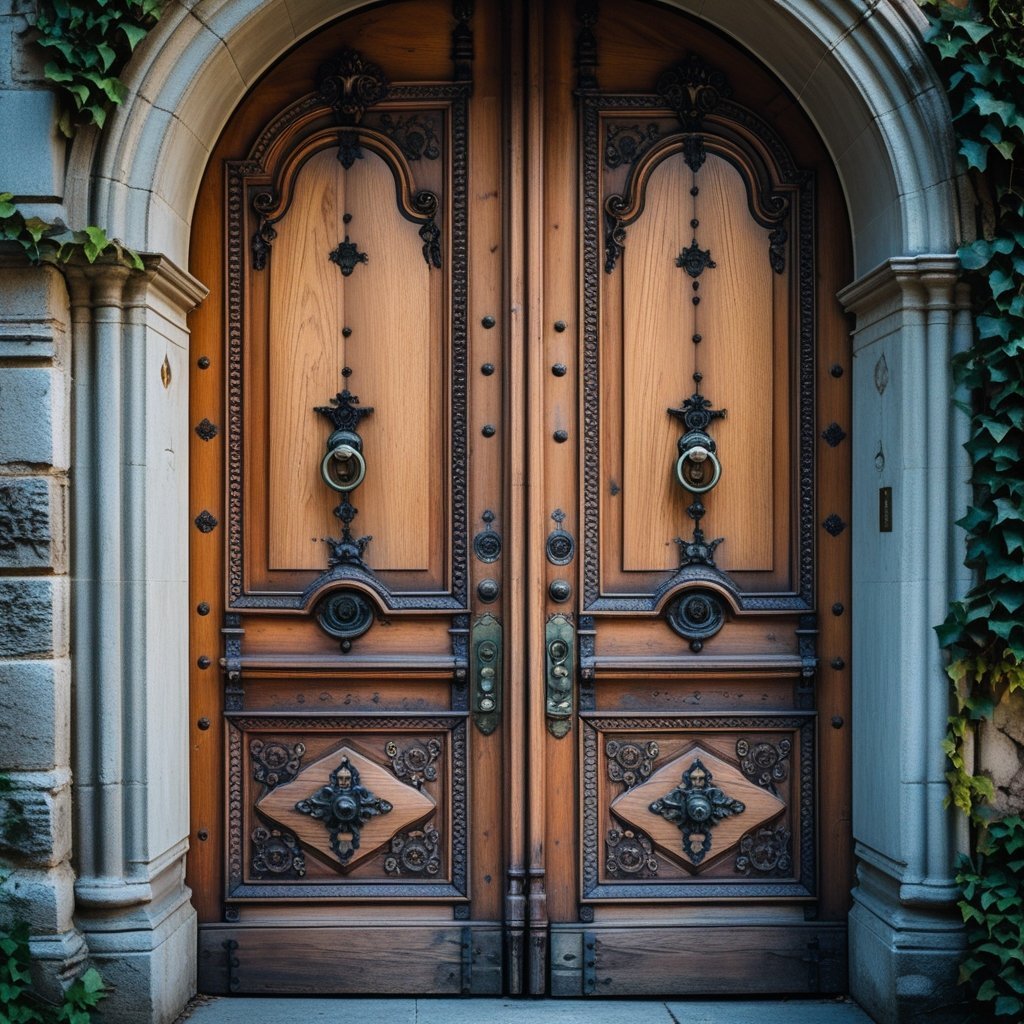
Let’s talk about Antique Entrance Doors, i have long been a fan of antique doors it’s the aristocratic nostalgia that it portrays that gives me goosebumps and have always loved the feeling on having one of these Antique styled doors maybe when am rich enough i would purchase it that is if they are still real antique doors available. Antique entrance door brings character and history to any home, offering a unique blend of craftsmanship and design often missing in modern options. It serves not just as a gateway but as a statement piece that reflects the style and era it originated from.
These doors are valued for their durability, intricate details, and the story they tell about the past.** Collectors and homeowners alike appreciate how an antique door can enhance curb appeal and create a distinct first impression.
Finding the right antique entrance door involves considering factors like wood type, condition, and historical significance. Understanding these details helps ensure the door fits both aesthetically and functionally in its new setting. Unfortunately finding the right suppliers this days are very rare you literally have to get it custom made
What Is an Antique Entrance Door?
An antique entrance door reflects the craftsmanship and design of past eras. These doors often show signs of age and historical significance. Their materials, styles, and construction methods differ from modern doors, making them unique pieces.
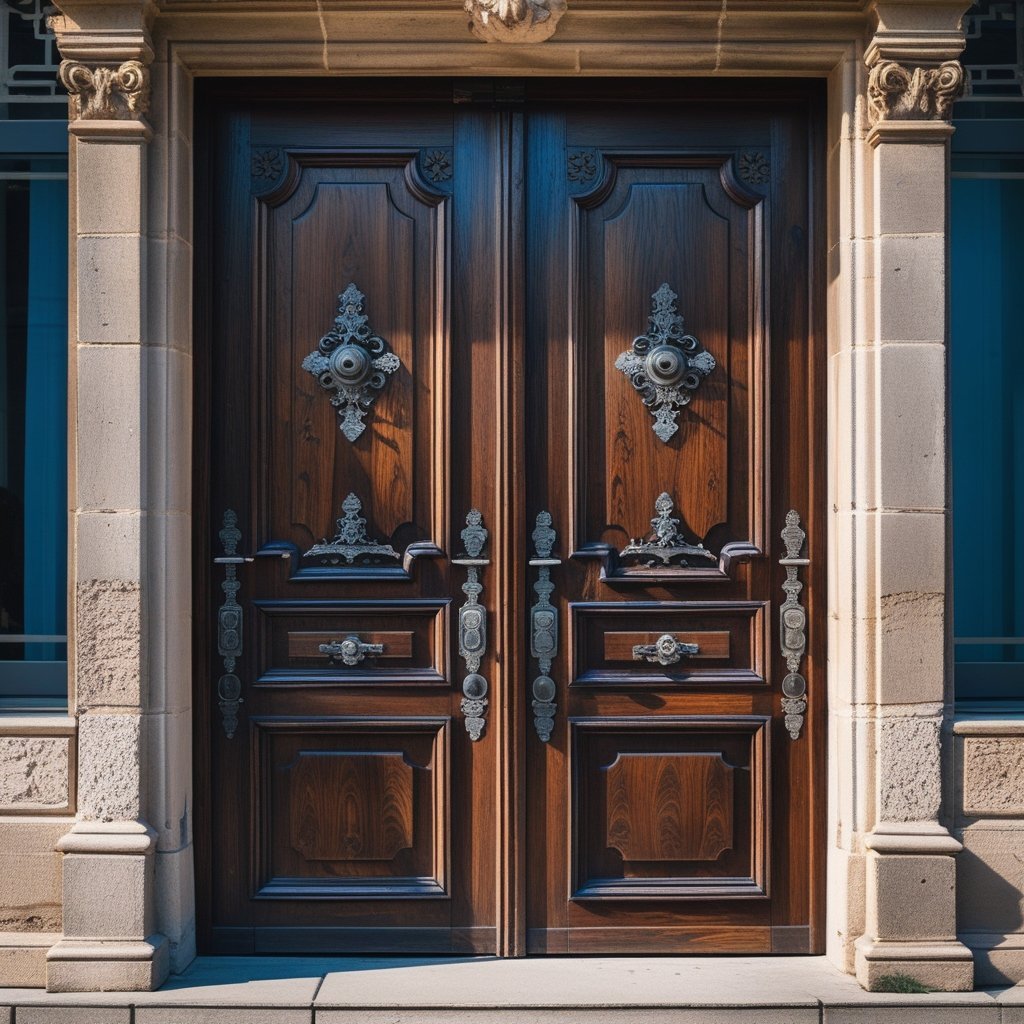
Defining Antique Entrance Doors
An antique entrance door is generally defined as a door that is over 100 years old. It is crafted from solid materials like hardwoods, often oak, mahogany, or walnut. The door typically features hand-carved details or glasswork that indicate the period style.
These doors carry natural patina, wear, and sometimes original hardware such as iron hinges or locks. The authenticity of an antique door is key—modern doors made to look old do not qualify as antiques.
Antique vs. Vintage vs. Reproduction
Antique doors are older than 100 years, while vintage doors are usually 20 to 100 years old. Reproduction doors are new creations designed to mimic antique styles but lack historical authenticity.
Vintage doors may show less wear and fewer original features compared to antiques. Reproductions offer the look but not the material history. Collectors and restorers prefer antiques for their genuine craftsmanship.
Historical Timeline and Eras
Antique entrance doors originate from various architectural periods:
– **Georgian Era (1714-1830):** Symmetrical designs with paneled wood and classical motifs.
– **Victorian Era (1837-1901):** Ornate details, stained glass, and intricate carvings.
– **Arts & Crafts (1880-1920):** Simple lines, handcrafted quality, and natural materials.
Each era has distinct styles, reflecting the construction techniques and aesthetic preferences of its time. Identifying the era helps in dating and valuing the door.
Unique Character and Charm
Antique entrance doors showcase design details that are rare today. They often feature intricate carvings, hand-forged hardware, and unique wood grain patterns. These elements give each door a one-of-a-kind appearance that adds personality and warmth to any entryway.
The natural aging of the wood creates authentic patinas and textures that tell a story. This character is difficult to replicate with new doors, making a home stand out in a subtle yet memorable way.
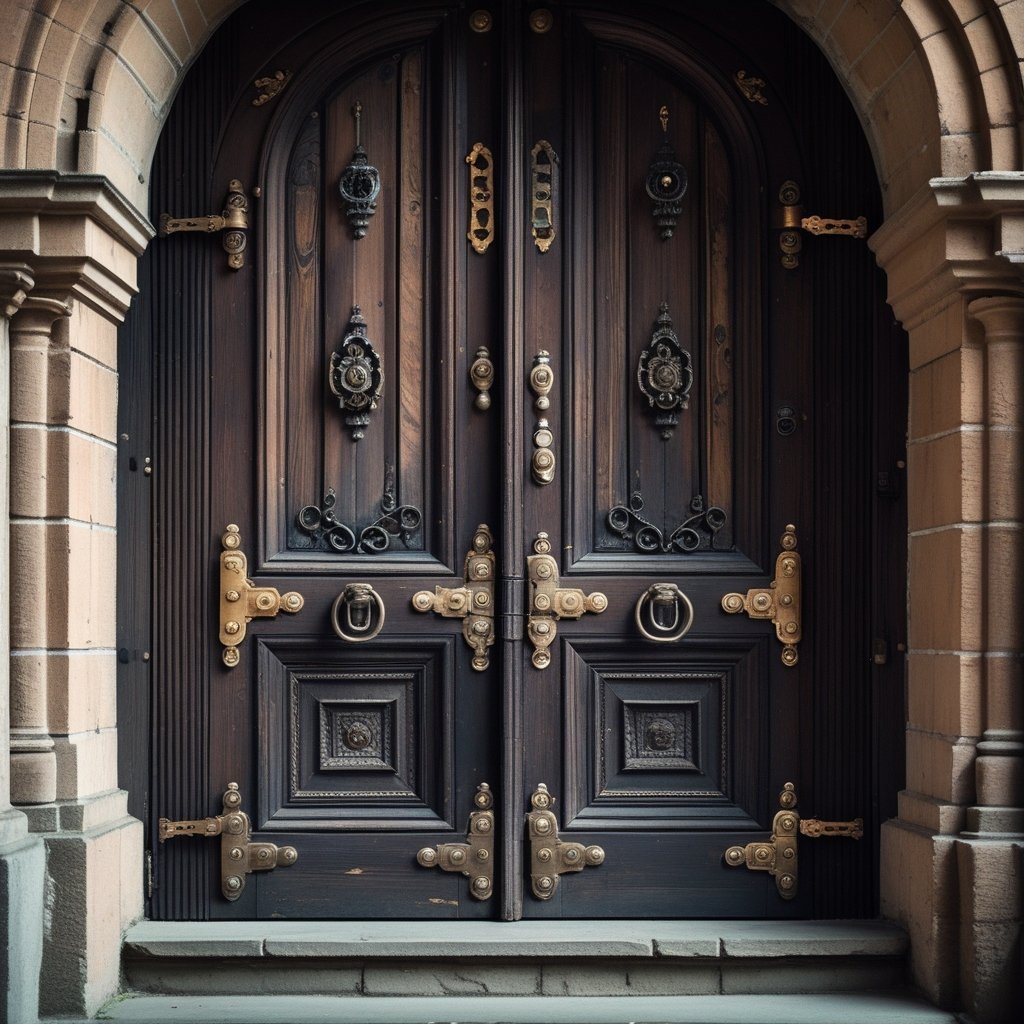
Craftsmanship and Quality Materials
Many antique doors were crafted using traditional joinery and hand tools, resulting in superior structural integrity. The wood used is often denser and older than what’s commonly available now, such as old-growth oak, mahogany, or walnut.
These materials not only enhance durability but also offer natural resistance to wear and weather. The attention to detail in the construction means the door can last for decades, sometimes centuries, if properly maintained.
Eco-Friendly and Sustainable Choice
Choosing an antique door supports sustainability by reusing existing resources rather than requiring new materials. This reduces the demand for logging and lowers the carbon footprint associated with manufacturing.
The longevity of antique doors means fewer replacements and less waste. Refurbishing or restoring these doors uses fewer chemicals and less energy compared to producing new doors, making it a greener option for environmentally conscious homeowners.
Popular Styles and Design Inspirations
Antique entrance doors often draw from distinct historical and architectural influences. These styles reflect craftsmanship, intricate details, and materials that defined different periods. Each type offers unique characteristics suited for various tastes and home aesthetics.
Victorian Entrance Doors
Victorian entrance doors typically feature elaborate carvings and ornamental glass panels. They often include stained or beveled glass set in wood frames with rich, dark finishes like mahogany or walnut.
Decorative elements might include floral motifs, brass hardware, and raised panels. These doors are designed to make a strong statement at the entrance, showcasing craftsmanship and Victorian-era elegance.
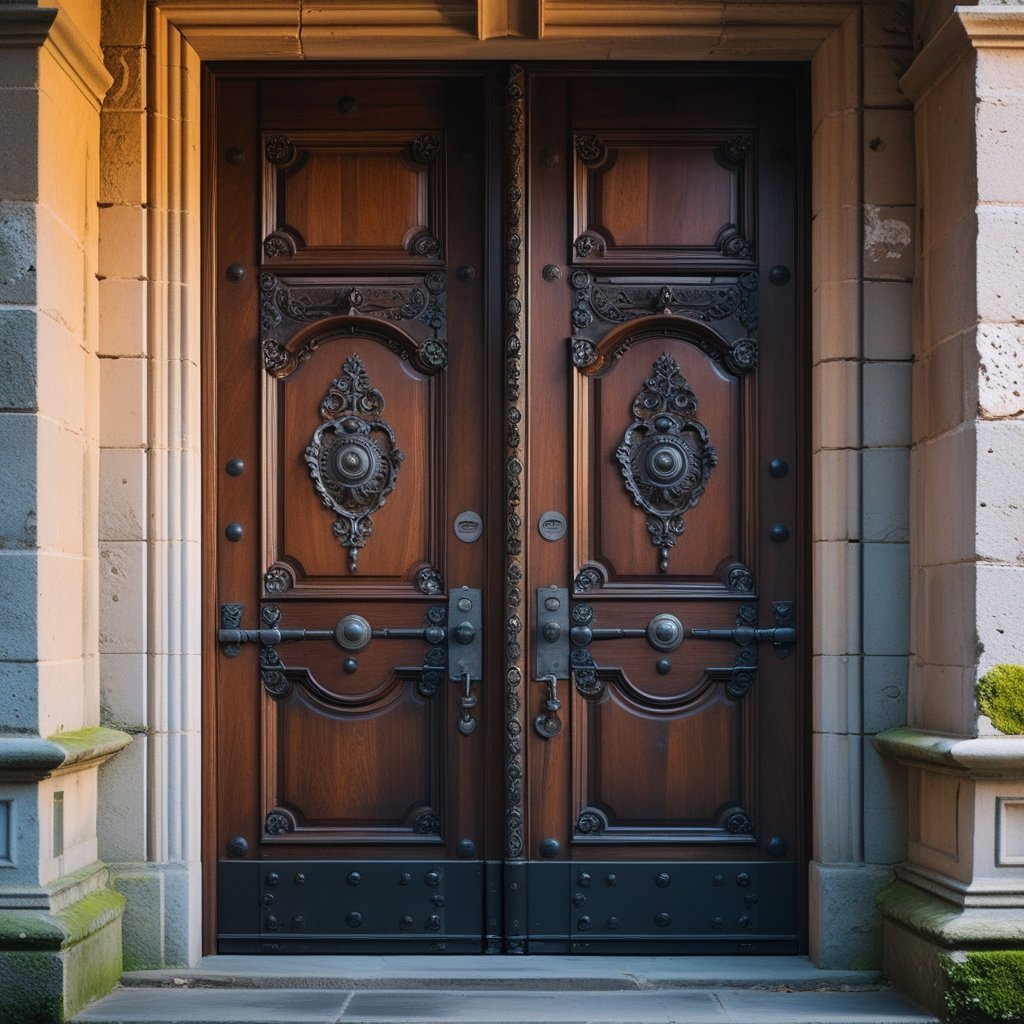
Art Deco and Art Nouveau Styles
Art Deco doors are known for geometric shapes, bold lines, and symmetrical patterns. Materials often include wood mixed with metal accents, sometimes highlighted by frosted or etched glass.
Art Nouveau contrasts with sweeping, natural curves, floral patterns, and organic forms. These doors focus on artistry and flow, using lighter woods and decorative glass to create an inviting, artistic entrance.
Colonial and Georgian Doors
Colonial and Georgian doors emphasize symmetry and proportion. They typically have six or eight raised panels, with clean lines and classic profiles painted in simple, timeless colors.
Transoms and sidelights with clear or frosted glass are common. Hardware is usually understated but durable, such as brass knobs or knockers. These doors suit traditional homes seeking historical authenticity.
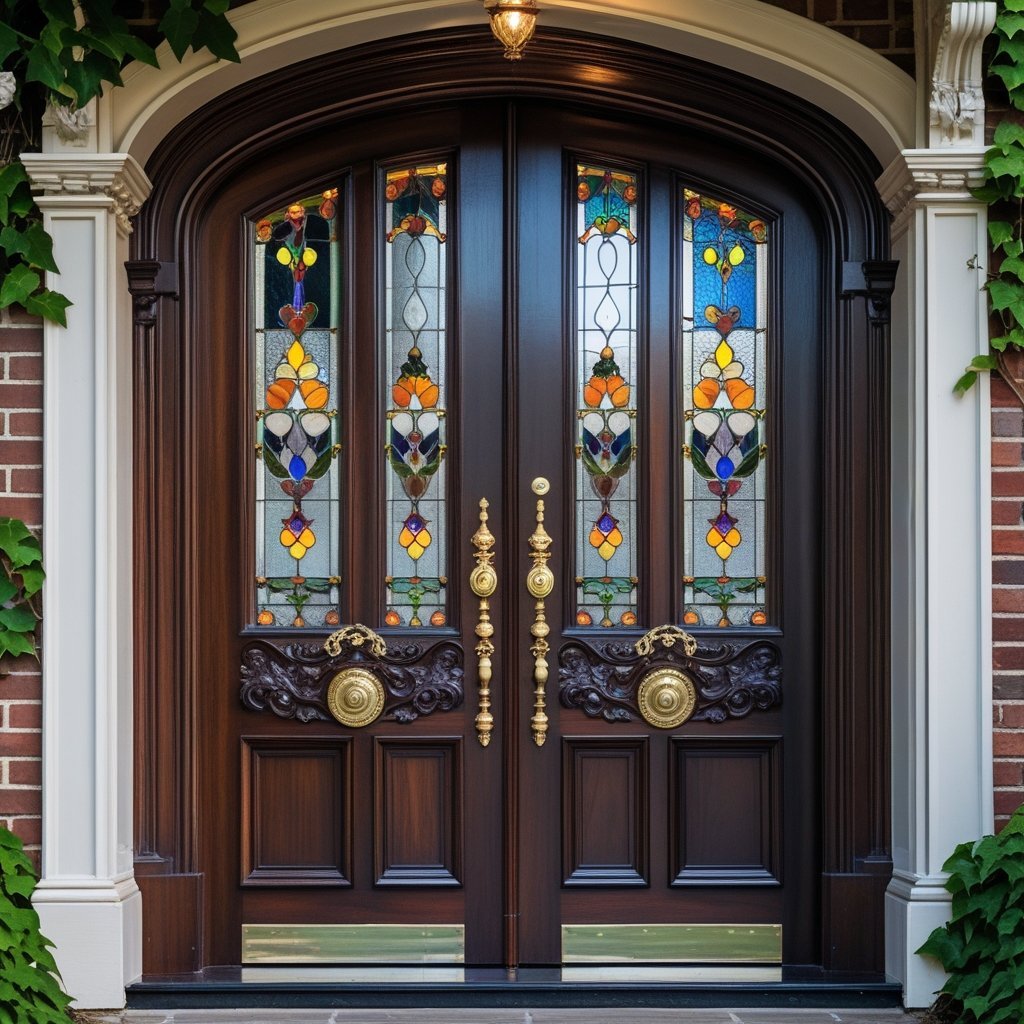
Craftsman and Rustic Designs
Craftsman doors highlight solid wood construction like oak or pine, with minimal decoration but precise joinery. They include divided-lite windows, often with small square panes in the upper part of the door.
Rustic doors use rough-hewn or reclaimed wood, iron hinges, and hardware. These entrances suggest a cozy, handmade look that fits cabins or farmhouses, prioritizing natural textures and straightforward design.
Key Materials Used in Antique Entrance Doors
Antique entrance doors are often crafted with a blend of durable and decorative materials. Each component contributes to the door’s strength, appearance, and historical value, making them unique in construction and style.
Types of Wood
Wood is the primary material used in most antique entrance doors. Common choices include oak, mahogany, walnut, and teak, valued for their durability and rich grain patterns. Oak offers robust strength and resists wear, while mahogany is prized for its fine texture and reddish hue.
These woods were often selected based on local availability and the desired aesthetic. Hardwood species ensured longevity and resistance to elements, which was crucial for doors exposed to weather. The woodworking techniques used, such as carving and paneling, highlighted the natural beauty of the wood.
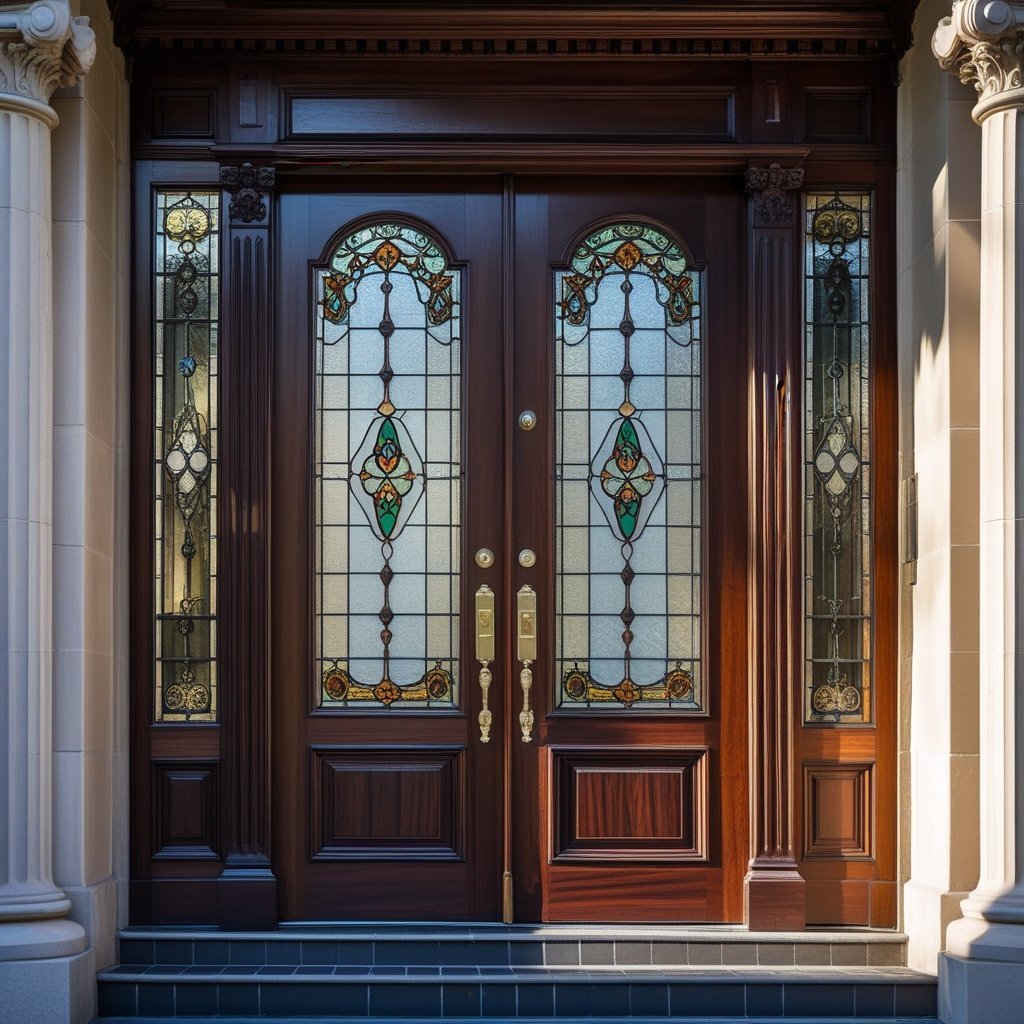
Ironwork and Hardware
Ironwork plays both a functional and decorative role in antique doors. Forged iron hinges, handles, knockers, and locks were hand-crafted, each piece often unique. Blacksmiths used wrought iron for its strength and ability to be shaped into intricate designs.
Hardware often includes elements like spike nails, decorative studs, and ornamental grills. These not only reinforced the door’s structure but also added character. Corrosion-resistant ironwork helped maintain door integrity over time, especially when properly cared for.
Glass Panels and Decorative Elements
Some antique doors feature glass panels, usually small and leaded or stained. These panels served both aesthetic and practical purposes, letting light into entrance halls while maintaining privacy and security. Glass types varied by period and region.
Decorative elements often included carved wood motifs, metal inlays, and painted accents. These features reflected the architectural style of the time, such as Victorian or Gothic influences. Even small details like fretwork and moldings added to the door’s overall charm.
How to Identify Authentic Antique Entrance Doors
Identifying an authentic antique entrance door requires attention to specific details like craftsmanship, materials, and signs of age. Understanding typical restoration marks and provenance adds confidence in assessing true antiques.
### Signatures of Authenticity
Authentic antique doors often feature original hardware like wrought iron hinges, hand-forged nails, and locks with intricate designs. Wood species such as oak, mahogany, or pine show age through natural patina and grain changes.
Tool marks or chisel impressions can be found around joints, signaling handcrafted construction. Unlike machine-made doors, these imperfections confirm age and authenticity.
Look for wear on edges or around handles that indicates frequent use over decades. Paint layers stacked unevenly over time also indicate genuine age.
Assessing Age and Provenance
Dating an antique door involves analyzing wood condition, style, and joinery methods. Dovetail joints, mortise and tenon construction, or wooden pegs typically point to a pre-20th-century origin.
Provenance documents or records from previous owners add value and verify history. Sometimes maker’s marks or stamped dates appear on the door frame or metalwork, helping to pinpoint origin.
Environmental effects like cracks, shrinkage, or wormholes suggest genuine aging rather than artificial distress. These indicators align with the door’s reported age or architectural period.
Recognizing Restorations and Alterations
Restorations may involve replacing hardware, sanding, or repainting, which change the door’s original appearance. New screws, uniform paint layers, or modern hinges could signal later modifications.
Check for inconsistencies in wood color, texture, or thickness where patches or boards have been added. A restoration might also attempt to conceal damage with fillers or artificial distressing.
Many antique doors retain restorations yet remain valuable, but knowing the extent of alterations helps buyers and collectors make informed evaluations.
Restoration and Preservation Tips
Restoring an antique entrance door requires careful cleaning, repairing damages, and protecting its original beauty. Proper techniques can extend the door’s life and maintain its historical value.
Cleaning and Damage Repair
You should start by gently removing dust and dirt using a soft brush or microfiber cloth. Avoid harsh chemicals; instead, use mild soap diluted in water to clean the surface. For stubborn grime, a natural solution like vinegar mixed with water can be effective.
When addressing damage, small cracks or chips need wood filler that matches the door’s tone. Larger issues such as warped wood or loose joints require professional attention to avoid further harm. Sanding should be done lightly and only when necessary to smooth repairs.
Preserving Original Finish
Protecting the original finish preserves the door’s character. He can apply a clear, high-quality wax or a natural oil like tung or linseed oil to nourish the wood. Avoid synthetic varnishes that may alter the door’s appearance.
Testing any product on a small, hidden area first is vital to ensure it doesn’t discolor the wood. Regular maintenance involves reapplying protective coatings every 6 to 12 months depending on the door’s exposure to elements.
Addressing Weathering and Wear
Weathering causes wood to expand, contract, and sometimes crack. He should inspect the door frequently for signs of water damage, mold, or insect activity, especially around joints and edges.
Sealing gaps with weatherstripping protects against drafts and moisture. Repainting or refinishing exposed surfaces can restore protection, but color and style should match the original to maintain authenticity. Proper ventilation near the door can also reduce moisture buildup, preventing rot.
Where to Buy or Source Antique Entrance Doors
Finding the right antique entrance door involves exploring various places offering different styles, conditions, and prices. Options include physical locations where doors can be inspected in person, online platforms with extensive inventories, and custom services tailored to specific needs.
Salvage Yards and Antique Dealers
Salvage yards are excellent for discovering genuine antique doors with historical character. These yards often acquire doors from old homes, buildings, or demolition sites. Buyers can physically examine the wood quality, hardware, and craftsmanship before purchasing.
Antique dealers typically curate selections of doors that have been cleaned or slightly restored. Prices vary based on the door’s age, style, and condition. Visiting multiple dealers can help compare options and find unique pieces not easily found elsewhere.
Installation and Maintenance Guidance
Proper preparation and careful handling during installation are key to preserving the character and function of an antique entrance door. Routine maintenance helps prevent damage and ensures the door remains both attractive and secure over time.
Preparing the Door Frame
The door frame must be inspected carefully before installation. Any rotting wood or structural damage should be repaired to guarantee a stable and level surface. The frame’s dimensions need to match the door to avoid gaps that could affect insulation and security.
Sanding and cleaning the frame removes dirt and old paint, allowing paint or finish to adhere properly. It’s important to apply a moisture barrier or primer on wooden frames to protect them from weathering. This preparation helps extend the life of both the frame and the antique door.
Fitting Antique Hardware
Original hardware like hinges, locks, and handles often require gentle cleaning and lubrication. Using WD-40 or a silicone-based lubricant can prevent squeaking and sticking without damaging metal finishes. If hardware is missing or damaged, sourcing authentic replacements is best to maintain the door’s historic value.
When attaching hardware, using stainless steel or brass screws prevents rust and corrosion. Align hinges carefully to ensure the door swings smoothly. For locks, a professional locksmith experienced with antiques can provide adjustments without compromising security or design.
Ongoing Care and Upkeep
Regular cleaning with a soft cloth and mild detergent preserves the door’s finish without stripping paint or varnish. Avoid harsh chemicals or pressure washing. Applying a thin layer of wax or wood oil twice a year protects wood from drying or cracking.
Inspect door seals and weatherstripping at least yearly. Replace worn materials to maintain insulation and prevent drafts. Check hardware periodically for rust or looseness, tightening screws and lubricating moving parts as needed. These steps help keep an antique door functional and visually appealing for many years.
Enhancing Curb Appeal With Antique Entrance Doors
Antique entrance doors can transform a home’s exterior by adding charm and character. Choosing the right color, harmonizing with the surroundings, and picking suitable lighting and accessories help highlight the door’s unique features.
Color and Finish Selection
The color and finish of an antique door impact its visual appeal and protection. Natural wood finishes often emphasize the door’s grain and craftsmanship, offering a timeless look. Dark walnut, mahogany, or oak tones bring warmth, while a painted finish can add personality.
Choosing weather-resistant finishes is crucial to protect the wood from sun and moisture damage. Matte or satin finishes are preferred over high gloss because they retain an authentic, aged appearance.
Bold colors like deep reds or classic greens work well with traditional styles. Soft fading or distressed paint enhances the antique feel without appearing overly new.
Coordinating With Exterior Design
An antique door should complement the house’s architecture. For Victorian or Colonial homes, carved details in the door often echo features like trim or moldings. Matching door hardware with other metal elements (e.g., gutters, railings) creates cohesion.
Natural stone, brick, or wood siding enhances the door’s vintage look. Balancing the scale between the door and surrounding windows or porch elements prevents visual clutter.
Adding a classic door knocker or period-appropriate address numbers reflects the door’s era. Simplicity in surrounding landscaping lets the door remain the focal point.
Lighting and Accessories
Proper lighting showcases the door’s details after dark and improves safety. Lamps with an aged bronze or black finish blend well with antique doors.
Wall sconces or lanterns placed symmetrically highlight the entryway and add warmth. Solar-powered options minimize wiring while maintaining style.
Accessories like a wrought iron mailbox or classic planters enhance the entry without overshadowing the door. Choosing hardware with vintage designs reinforces the antique aesthetic.



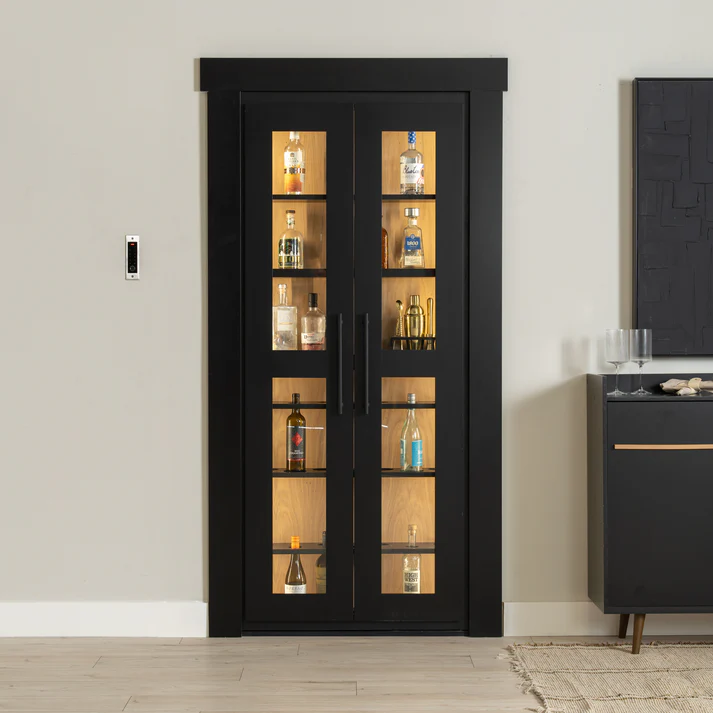
Esentepe su kaçak tespiti Ekip çok kibar ve profesyonel, kaçağı hemen buldular. https://interactor.pro/read-blog/84763
iewriv
furnisheed.com
furnisheed.com
5qwdup
Excellent move-out service, got our deposit back completely. This should be standard moving. Transition heroes.
Edwina Pegues
Excellent post. I was checking constantly this weblog and I’m impressed! Extremely helpful information particularly the final phase 🙂 I handle such information a lot. I used to be looking for this certain info for a long time. Thank you and good luck.
I have read a few good stuff here. Definitely worth bookmarking for revisiting. I wonder how much effort you put to create such a excellent informative web site.
I’m no longer sure the place you are getting your information, but great topic. I must spend some time studying much more or figuring out more. Thank you for great information I used to be on the lookout for this information for my mission.
Krystyna Joyce
Hi my friend! I wish to say that this article is awesome, nice written and include almost all important infos. I’d like to see more posts like this.
Katherin Dacre
Charissa Butt
I’ll right away clutch your rss feed as I can not to find your e-mail subscription hyperlink or newsletter service. Do you have any? Kindly let me recognize in order that I may subscribe. Thanks.
I wanted to post you the little remark to help say thank you yet again relating to the stunning things you have contributed on this page. It is really open-handed with people like you to present freely exactly what most of us would’ve offered for sale for an e-book in making some cash for their own end, precisely considering that you could possibly have done it in the event you wanted. The good ideas in addition acted like a good way to be sure that other individuals have similar interest just like mine to grasp many more when it comes to this condition. Certainly there are thousands of more fun sessions ahead for individuals who looked over your website.
Excellent post. I was checking constantly this blog and I am impressed! Extremely useful information specifically the last part 🙂 I care for such info much. I was looking for this certain info for a long time. Thank you and good luck.
**mindvault**
mindvault is a premium cognitive support formula created for adults 45+. It’s thoughtfully designed to help maintain clear thinking
Great article! I really appreciate the clear insights you shared – it shows true expertise. As someone working in this field, I see the importance of strong web presence every day. That’s exactly what I do at https://webdesignfreelancerhamburg.de/ where I help businesses in Hamburg with modern, conversion-focused web design. Thanks for the valuable content!
**breathe**
breathe is a plant-powered tincture crafted to promote lung performance and enhance your breathing quality.
Mỗi tối rảnh là mình lại vào LuongSonTV xem các trận đang diễn ra. Trang có cả tin tức và highlight nên xem xong trận vẫn có thứ để theo dõi tiếp. Mình đánh giá cao tốc độ phản hồi khi bấm đổi link vì hầu như không có độ trễ. Cảm giác như xem TV trực tuyến vậy.
Khám phá thế giới giải trí trực tuyến đỉnh cao tại MM88, nơi mang đến những trải nghiệm cá cược thể thao và casino sống động.
Khám phá thế giới giải trí trực tuyến đỉnh cao tại MM88, nơi mang đến những trải nghiệm cá cược thể thao và casino sống động.
采用高效谷歌外推策略,快速提升网站在搜索引擎中的可见性与权重。谷歌外推
kuwin sở hữu kho game đa dạng từ slot đến trò chơi bài đổi thưởng, mang đến cho bạn những giây phút giải trí tuyệt vời.
kuwin sở hữu kho game đa dạng từ slot đến trò chơi bài đổi thưởng, mang đến cho bạn những giây phút giải trí tuyệt vời.